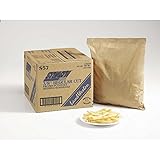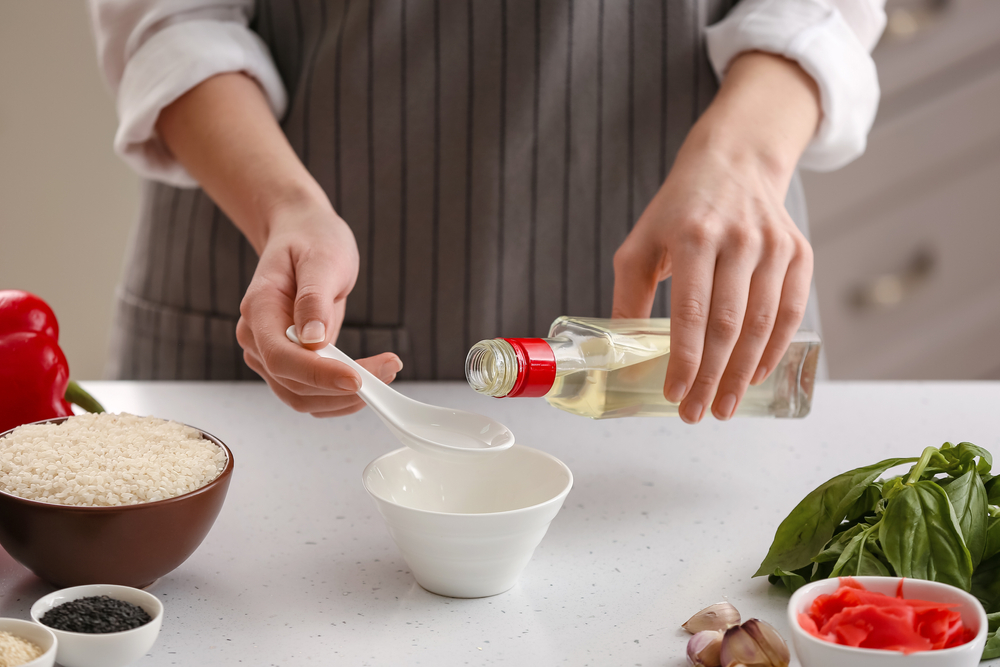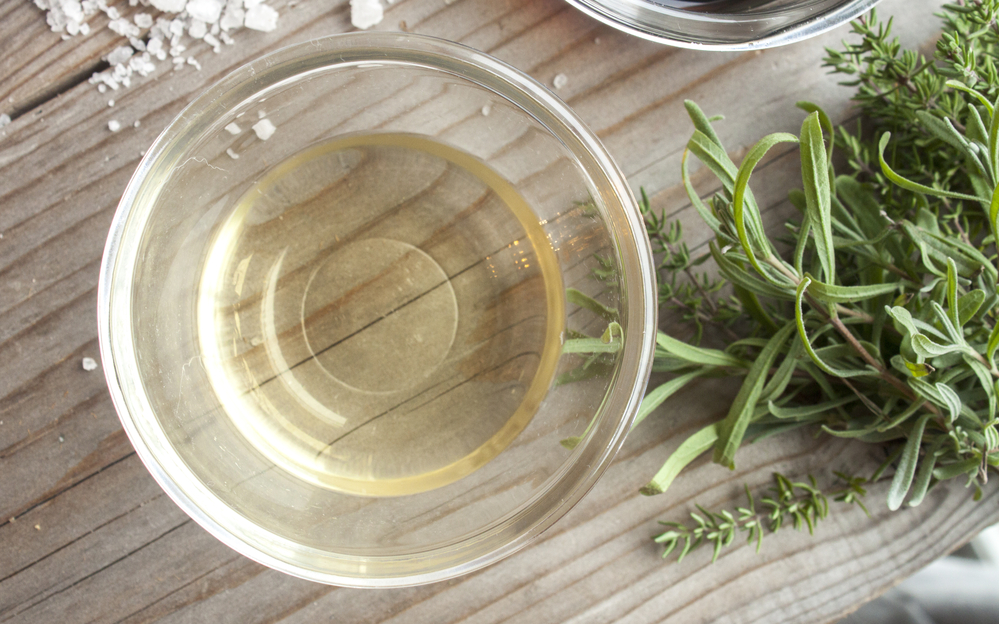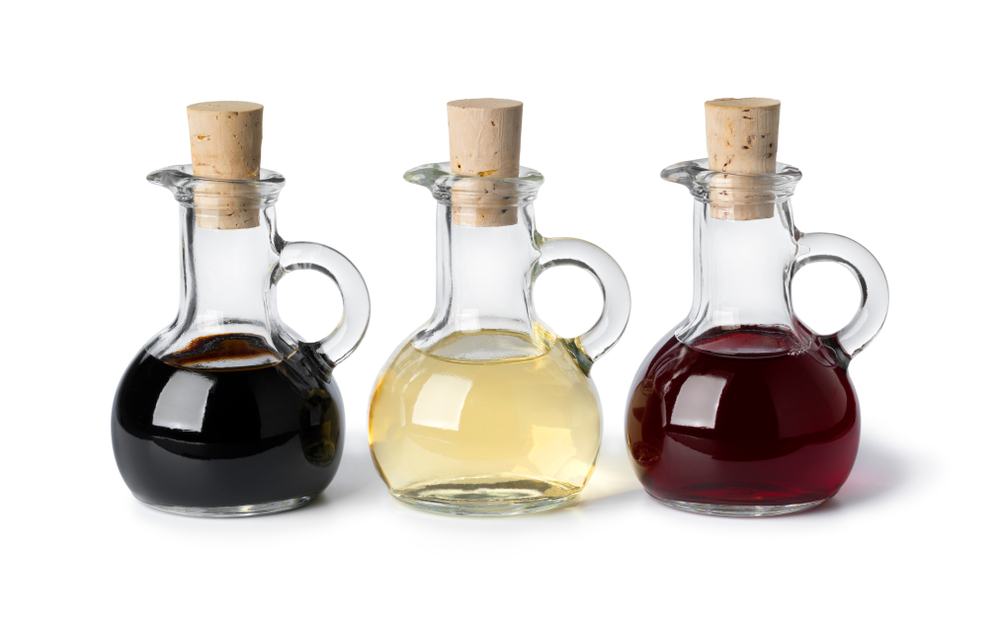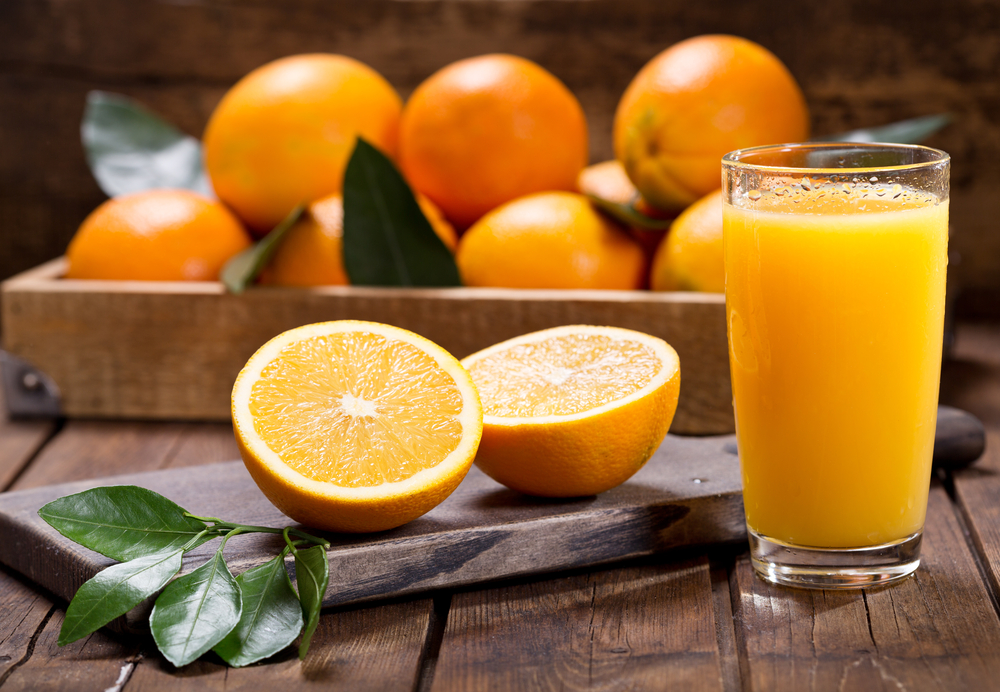You have several methods to fry your french fries in a frying pan, such as deep frying, sautèing, or shallow frying. Whichever way you choose to fry is up to you! Frying frozen french fries in a frying pan is one of the more common methods of cooking frozen french fries.
Any method of frying is suitable for frying your frozen french fries.
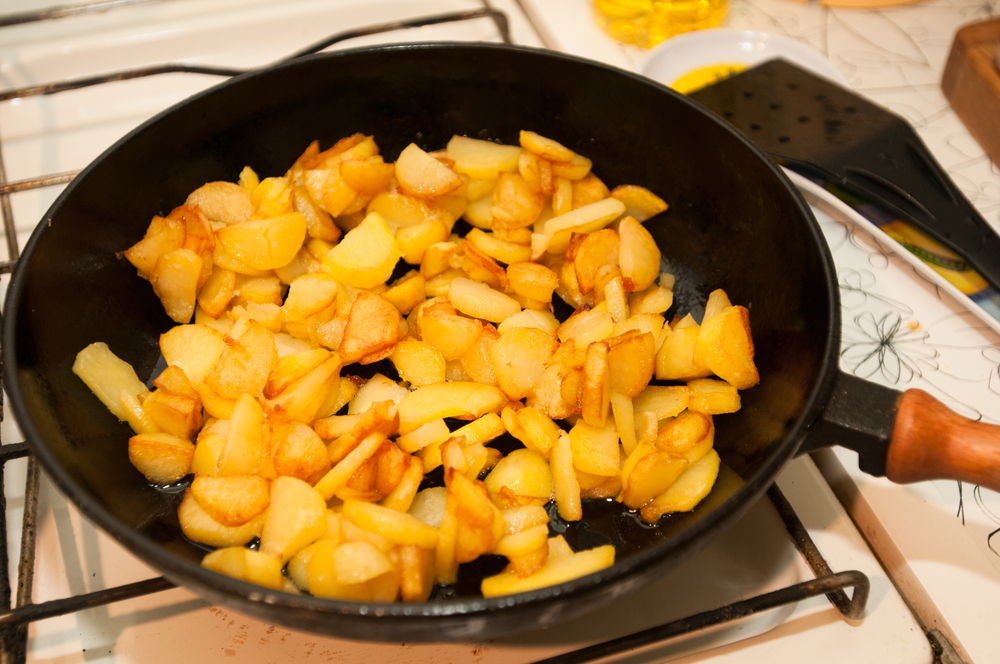
Once you successfully fry your french fries in a pan, the next thing you need to consider is the dipping sauce. You could even use a spritz of vinegar or citrus juice to bring out the natural potato flavor of your french fries.
Can You Cook Frozen French Fries in a Frying Pan?
You can undoubtedly cook frozen french fries in a frying pan; it’s too easy! Pan-frying your french fries will give you a better-tasting french fry than baking in your oven. Not only will it help your taste of french fries, but it is also more efficient to pan-fry french fries. Pan frying is straightforward and one of the best ways to attain crispy and delicious golden brown french fries.
You can immediately turn down the heat, rather than in the oven, where you cannot change instantly. One thing you should remember is to use a longer-handled skillet. French fries are prone to splashing and splattering, which could cause burns; using a longer handle will slightly alleviate this problem.
- All our crispy, golden, Grade A fries are made from 100% real, fresh peeled, American grown potatoes. We take great care to cut, season, and freeze them in under an hour to lack in all the delicious, freshly cooked flavor. Your family deserves the highest quality because, if it’s not Grade A, it’s not Ore-Ida
- Made from the highest quality Grade A potatoes grown in the U.S. Classic crinkle fries are perfect for dipping in ketchup. Enjoy the classic burger and fries combo
- Are mealtimes a nightly struggle? Try Potato Pay, where ORE-IDA fries are your crispy currency to make your kids eat just about anything
- Our tasty French fries have the crispy golden outside and fluffy inside you need to win at mealtime
- One 8 lb. bag of Ore-Ida Golden Crinkles French Fried Potatoes. Ore-Ida Golden Crinkles French Fried Potatoes offer an easy side dish for your meals
You may also want to use a skillet that has a lid. You can put the cover on to shield your oil and yourself, preventing splashing or splattering, resulting in a huge mess or burns.
Do I Need to Defrost Frozen French Fries Before Frying?
Actually, it would be best not to let your french fries from defrosting before frying. Defrosted fries can turn soggy and soft in the cooking process, making for an unpalatable disarray.
However, if your french fries happen to have lots of freezer burn and clusters of ice on them, you can let the fries sit out for 5 to 10 minutes to allow the ice to melt a bit.
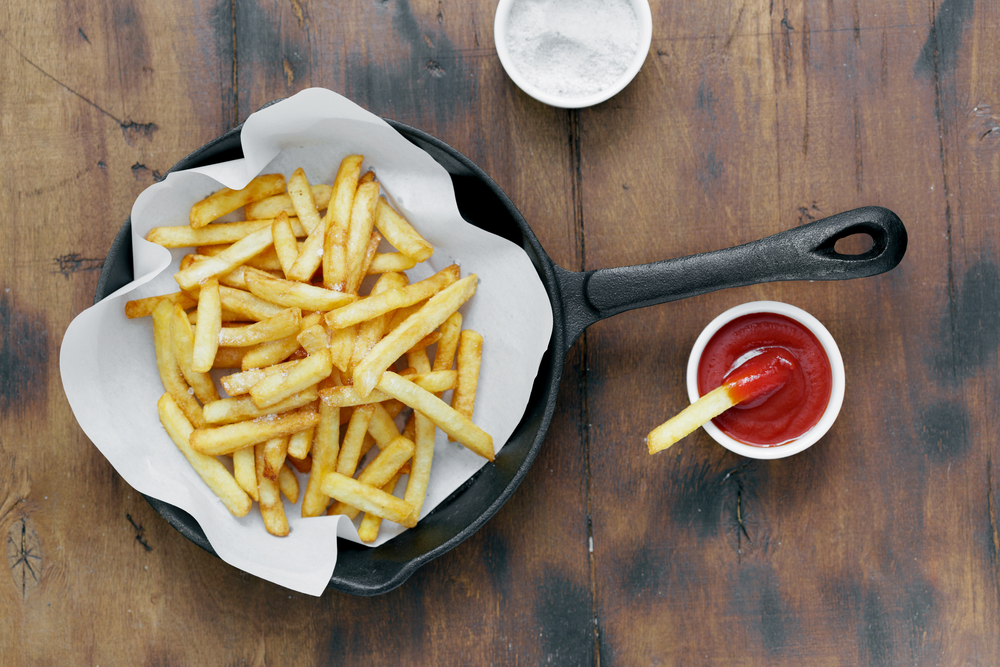
Although you should not let them defrost thoroughly, you will end up with soggy fries; yuck! You can fry defrosted fries. However, the taste and quality will rapidly decline in the final product. Use precautions when frying defrost fries.
What is the Best Oil to Use When Frying Frozen French Fries on the Stove?
There are several options in terms of oil you can use to fry your french fries, but which one is best? As stated earlier, several options exist for oil for frying french fries, such as Safflower oil, vegetable oil, canola oil, coconut oil, or grapeseed oil. Peanut oil is your best option if you’re not allergic to peanuts, that is! Peanut oil will not affect the flavor of your french fries and has a high smoke point of 450°F or 233°C, which is excellent for frying!
You could also use coconut oil, corn oil, or sesame oil. However, these oils will emit a distinct flavor into your french fries, which could be an unpleasant taste for some. Sunflower oil radiates an intense and sharp aroma when you heat it to 350°F or 175°C and also affects the final flavor of your product. Any oil that has a smoke point beyond 350°F or 175°C would be suitable for frying french fries.
Olive oils, along with almost every other unrefined oil, are not suitable for frying as they have a shallow smoke point. A low smoke point oil will burn before the fries have fully cooked, resulting in an undesirable mess.
How to Cook Frozen French Fries on the Stove?
There are several cooking methods for french fries, but the most efficient way to cook your frozen french fries is to pan-fry them. Whether you sautè, deep fry, or shallow fry, you are guaranteed to end with a beautifully crisp and delicious french fry. What is your favorite pan-frying method of cooking frozen french fries?

1. Deep Fry
Foremost, you could deep fry your french fries in a skillet or deeper pan. Deep frying can be an ideal method for cooking your french fries. However, deep frying food could add up to 50% or more calories to your meal. Deep frying may not be the most healthy option, but it is definitely the tastiest!
If you don’t mind a few extra calories and carbs, then deep frying will be a perfect method for you to fry your frozen french fries. Though you can’t authentically deep fry foods in a pan, you can come extremely close!
Steps
- First, preheat a deep pan or skillet over medium to high heat. Ensure you have a deep enough pan to submerge your french fries completely.
- Next, add 3 to 4 inches of oil to your deep skillet. Bring your oil to 350°F or 175°C before adding your fries to your skillet. To test if your oil is hot enough, you can add one french fry; if it starts bubbling and frying, your oil is hot enough.
- Once your oil has reached 350°F or 175°C, you can add your french fries. Ensure that your oil is not too hot. The oil that’s too hot can cause you almost instantly to burn your french fries. If you don’t bring your oil up to temperature, your fries could stay uncooked and turn soggy or grease-logged.
- When your french fries have turned a golden-brown color, they have finished cooking; they should also have a crispy texture when you remove them from the skillet. Remove your french fries from the skillet when they have finished cooking using a slotted spoon, preferably not plastic, as plastic may melt in the oil.
- After pulling your french fries from your skillet, set your french fries on a paper towel-lined plate or a wire rack to drain the excess grease from your french fries.
- Finally, when your french fries have cooled sufficiently to eat, you can serve them with your favored dipping sauce, such as ketchup or mayonnaise.
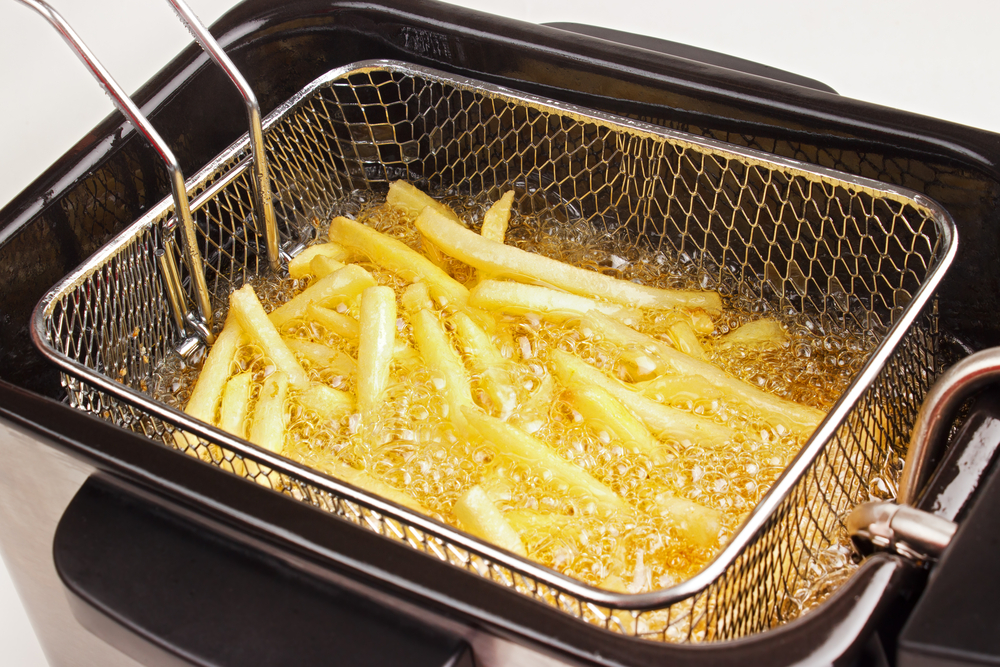
2. Shallow Fry
Shallow frying is the second and most common home method to fry your frozen french fries. Shallow frying is perfect when you need more oil to deep fry. Similar to deep frying, you can use a regular skillet or pan rather than a deep one that you would use for deep frying. The best skillet options are preferably cast iron or a wok pan.
Steps
- Foremost, place your skillet on your stovetop over medium-high heat. Preheat your skillet.
- Then, you can add your oil. Add about ¼ inch of oil to your shallow pan.
- Next, heat your oil to 350°F or 175°C. You can test this by adding a single french fry to your pan; if it sizzles, your oil is hot enough.
- Once your oil has reached your desired temperature, you can add your french fries. Only add a few french fries at a time, as that can affect the results of your final product. Cooking your french fries in batches would be ideal for fast and even cooking. You could cover your pan with a lid as a splatter guard, avoiding getting burnt and making a huge mess.
- Then, cook your french fries until they reach a golden brown color and have a crispy texture.
- When your french fries are golden brown and crispy, you can remove them from your skillet.
- After removing your french fries from your fry pan, place your french fries on a wire rack or paper towel-lined plate to drain off the excess oil.
- Serve and enjoy when your french fries have cooled with your favorite dipping sauces.
3. Sautéing
Last but not least, you could sautè your frozen french fries. You can sautè french fries just as you would sautè vegetables or meat. This process is very similar to pan-frying regular potatoes in butter.
You could use this method if you are looking for a healthier option. Deep frying can add 50% or more calories to your french fries; who wants extra calories? Not many people! This option is perfect if you don’t need all those added calories.

Steps
- First, take a large nonstick skillet or pan and place it on your stovetop over medium-high heat.
- Second, add a tablespoon of oil or clarified butter to your skillet like you would sautèing anything else. Let the pan heat up.
- Next, when your oil is hot, carefully add your french fries to your hot pan. Cook your fries untouched for roughly 2 to 3 minutes, then flip for even heating and crisping. Do not let the fries overlap; a single layer will cook the best. You could cover the fries with a lid to avoid splatter and burns.
- When your french fries have turned a beautiful golden brown, it is time to remove them from your pan. Remove your french fries from the pan and set the french fries on a wire rack or paper towel-lined plate.
- Lastly, when your french fries have completely cooled, serve and enjoy.
How to Know If Frozen French Fries are Done Frying on the Stove?
The primary way you know your french fries have cooked is their color. When you first remove your french fries from your freezer, they are light and pale in color. Upon cooking, your fries will start turning a gorgeous golden color. Once your fries have reached the golden color, your fries have finished cooking, and are ready to get removed from the oil.
- Ships frozen, CANNOT be cancelled after being processed.
How to Make French Fries Tastier After Cooking on the Stove
You’d be surprised how many things you can add to your french fries for a tastier flavor! Many people will sprinkle their french fries with a bit of salt, dip them in ketchup, and call it good. But what else can you do to make your french fries taste better than just salt and ketchup?
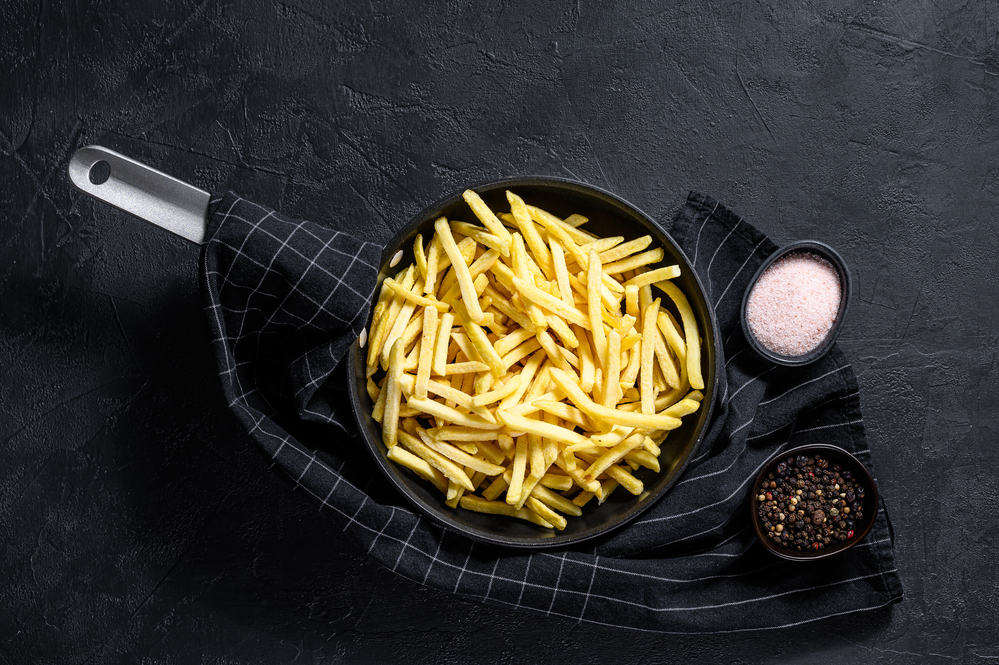
Seasoning
Seasoning is usually the first thing added to a meal to enhance flavor. Most commonly, a sprinkle of salt and pepper will suffice for some people. However, what else can you add to your french fries in terms of seasonings to make them tastier?
Get creative and use your imagination; try different things and different seasonings. When you remove your french fries from the oil, drain the excess grease, then immediately sprinkle your herbs over your fries for the best results.
A few common seasonings you could add to your french fries include but are not limited to:
- Cajun-style seasonings.
- Seasoned salt.
- Cayenne pepper.
- Oregano.
- Truffle Parmesan.
- Paprika.
- Rosemary.
- Basil.
Maybe seasonings are so much your thing you could try adding a few acidic liquids to enhance the natural potato flavor of your french fries. You could spritz some vinegar or citrus juice on your french fries upon removing them from the oil. You can always dip your french fries in sauces like ketchup, horseradish, or hot sauce.
Drizzle Bits of Oil
Another option for enhancing the natural potato flavor of french fries is drizzling a bit of oil. Drizzling in oil can be an excellent way to add that extra flavor you’re missing. However, you must be careful when drizzling french fries with oil as you can very easily overdo it and make your french fries soggy and soft. No one likes soggy fries, so using the ever-so-tiniest amount, in this case, is your best option.

You could try oils like:
- Fresh virgin olive oil.
- Truffle oil.
- Avocado oil.
- Grapeseed oil.
- Coconut oil.
- Different kinds of nut oils, like walnut, peanut, or almond oil.
Top Your French Fries like Nachos
Everyone loves nachos! They’re easy to make with minimal effort. You can use french fries in place of the nacho chips in nachos. Layer cheesy and gooey goodness on top of your french fries just as you would with nachos.
You can’t be disappointed with nacho fries! You can use several things to top your nacho fries; of course, cheese is a must! You can add whatever you want to your nachos; use your imagination!
- Ships frozen, CANNOT be cancelled after being processed.
The food you could use to top your nachos include but is not limited to:
- Nacho cheese.
- Pico de Gallo.
- Diced onions.
- Diced jalapeños.
- Diced tomatoes.
- Guacamole.
- Sour cream.
- Shredded cheese.
- Black beans.
- Grilled corn.
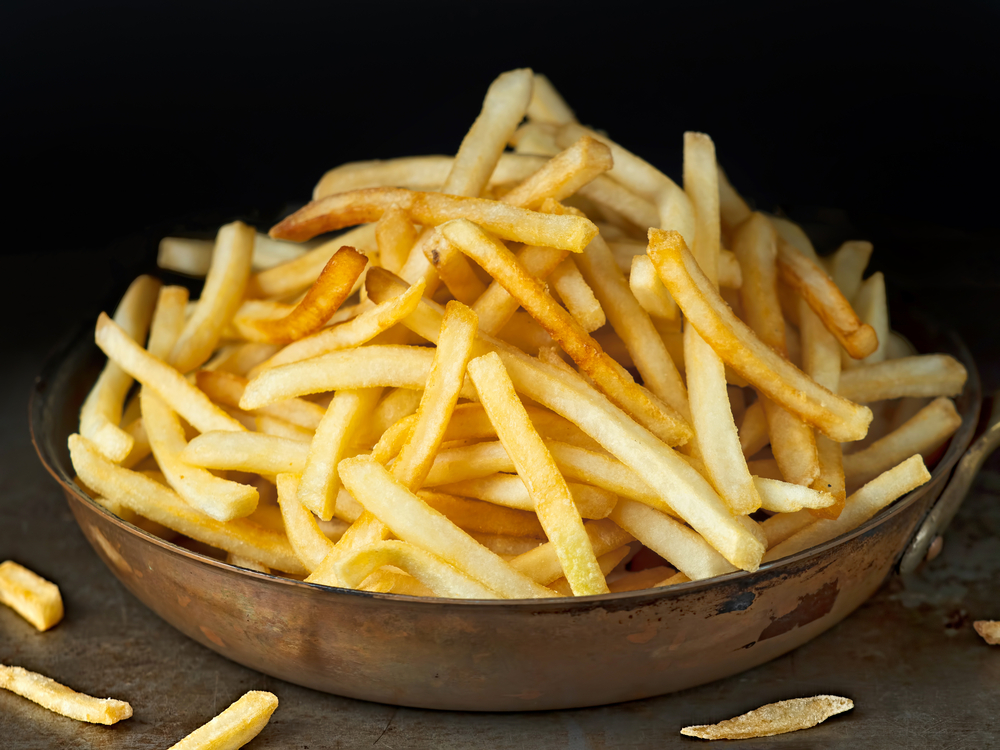
Other Ways that You Can Cook Frozen French Fries Aside From a Pan
Furthermore, there are a few other ways to cook frozen french fries other than pan-fried. For example, you could cook your french fries in your air fryer and have a decent outcome. The air fryer usually yields likable and crispy results considering it uses dry heat.
No moisture is involved with the air fryer method, so you will likely end with a crisp result every time, no matter what you do. Just remember to let the french fries cook long enough! Baking in your oven is relatively the same, although you may end up with soggy fries if you have lots of freezer burn and ice on them.
Another option would be your microwave. However, microwaves use water molecules for cooking food from the inside out. Whereas your air fryer, dry heat, cooks from the outside in. Therefore, a microwave may give you soggier results than your oven, stovetop, or air fryer.
Related post: How Long to Microwave a Hot Pocket
Conclusion
By and large, you can quickly fry your french fries in a pan with minimal effort! Whether you choose to sautè, deep fry, or shallow fry, any option will do just fine to get you some crispy, delicious golden brown french fries. However, if pan-frying isn’t your thing, you can also use your oven or air fryer! In any case, you have several options for frying your french fries. After frying, don’t forget the dipping sauce or maybe a spritz of vinegar!




